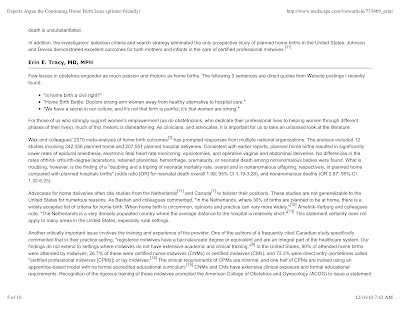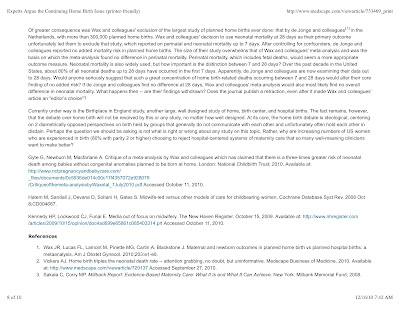Even the traditional drop side crib is now outlawed. So many dangers, so many hazards. Oh, what is a parent to do? Just let your baby sleep on his midwife!
May all babies be born into loving hands...

K. Michelle Doyle, CNM, NYS LM
www.localcaremidwifery.com
www.localcaremidwifery.blogspot.com
After Dozens of Deaths, Drop-side Cribs Outlawed
Associated Press
(Dec. 15, 2010) It's the end of the traditional crib that has cradled millions of babies for generations. The government outlawed drop-side cribs on Wednesday after the deaths of more than 30 infants and toddlers in the past decade and millions of recalls.
It was a unanimous vote by the Consumer Product Safety Commission to ban the manufacture, sale and resale of the cribs, which have a side rail that moves up and down, allowing parents to more easily lift their child from the crib.
The new standard requiring cribs to have fixed sides would take effect in June. The move by CPSC would also prohibit hotels and childcare centers from using drop-sides, though those facilities would have two years to purchase new cribs. CPSC Chairman Inez Tenenbaum hailed the new standard for cribs as one of the strongest in the world. "I believe these new standards will markedly reduce crib-related hazards and help to ensure that young children sleep more safely in their cribs," Tenenbaum said after the vote.
Around for decades, drop-side cribs have come under scrutiny in recent years because of malfunctioning hardware, sometimes cheaper plastics, or assembly problems that can lead to the drop-side rail partially detaching from the crib. When that happens, it can create a dangerous "V''-like gap between the mattress and side rail where a baby can get caught and suffocate or strangle.
In all, drop-side cribs have been blamed in the deaths of at least 32 infants and toddlers since 2000 and are suspected in another 14 infant fatalities. In the past five years, more than 9 million drop-side cribs have been recalled, including cribs from big-name companies such as Evenflo, Delta Enterprise Corp., and Pottery Barn Kids.....
CPSC video
























